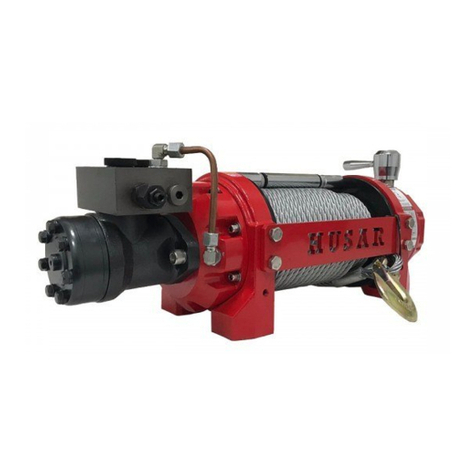
Please read and save these instructions. Read carefully before attempting to assemble, install, operate or maintain the
product described. Protect yourself and others by observing all safety information. Failure to comply with instructions could
result in personal injury and/or property damage! Retain instructions for future reference.
Unpacking - When unpacking, inspect carefully for any damage that may have occurred during transit. Make sure any loose
fittings, bolts, etc., are tightened before putting unit into service.
GENERAL SAFETY INFORMATION - Throughout this manual potential safety hazards will be noted with the following
terms. Please read and understand these terms before operating the product.
Danger means a hazard that WILL
cause death or serious injury if the
warning is ignored.
Warning means a hazard that COULD
cause death or serious injury if the
warning is ignored.
Caution means a hazard that MAY cause
minor or moderate injury if the warning
is ignored. It may also mean hazard that
will only cause damage to property.
Read all manuals and instructions included with this product carefully. Be thoroughly familiar with the controls and the
proper use of the equipment. Only persons well acquainted with these rules of safe operation should be allowed to use the
winch.
Rope breakage and whiplash hazard
1.
Never allow anyone to be between the anchor and the winch. If the rope breaks it could snap back with enough
force to cause severe injury.
2.
The winch is shipped with a closed loop anchor roller. If the included anchor roller is ever replaced it must be
replaced by a closed loop anchor roller. The closed loop anchor roller will prevent the anchor line from snapping
onto the boat deck in the event the rope breaks.
3.
Always use nylon rope with a minimum of 600 pound tensile strength for this product. Never substitute cable for
rope. Cable is not an acceptable anchor line as it does not stretch and is easily frayed. If cable breaks it can snap back
with more force than nylon rope.
4.
This product is intended to lift anchors. Do not attempt to lift or move people or other objects.
5.
Inspect entire rope for weak or worn condition or kinking (short tight twist or curl) before each use. Replace worn
rope with nylon rope specifically rated for this product.
Electrical shock and fire hazards
1.
Do not use electrical wire sizes smaller than 14 AWG (gauge) with a 105-C temperature rating. Using wire that is too
small could result in overloading and a fire. Large gauge wire is permitted.
2.
Use the supplied circuit breaker or a 20 amp in-line fuse when installing this winch.
3.
Use only suitable wire for electrical connections between the battery, switch and the winch.
4.
Make sure any crimped electrical connectors meet industry strength requirements.
5.
Always disconnect the battery lead wires from the battery before attempting to install, relocate, or service the
winch.
Cruising and boat trailering hazards
When the boat is cruising or being trailered, the anchor must be secured inside the boat. If the anchor breaks free during
cruising or trailering, it could cause serious damage and/or injury.
INSTALLATION AND OPERATING INSTRUCTIONS BST ANCHOR




























